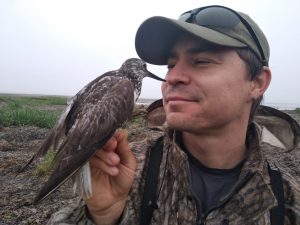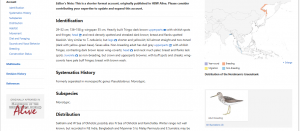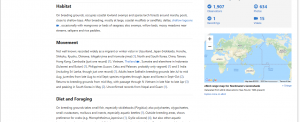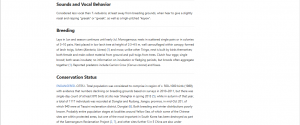
Philipp Maleko is a master’s student in interdisciplinary ecology with the School of Natural Resources and Environment (SNRE). In summer 2019, Maleko was a member of a research team that discovered the nest of an endangered Russian shorebird, the Nordmann’s greenshank. Up until that point, no one had seen a nest of this species in more than 40 years.
Although the pandemic cancelled Maleko’s trip back to Russia this summer, he was able to gain an opportunity to create a species account of the Nordmann’s greenshank for the Cornell Lab of Ornithology’s “Birds of the World”, a comprehensive subscription bird database.
Maleko’s experience with expedition leader Dr. Vladimir Pronkevich, of the Russian Academy of Sciences, on last year’s trip to eastern Russia, and his subsequent research, has made Maleko a species expert on the Nordmann’s greenshank.
Born in St. Petersburg, Russia, Maleko moved to Los Angeles, California at the age of six. He received his bachelor’s degree from University of California – Davis. After graduation, he spent three years doing field work across the country until he became a member of the Florida Cooperative Fish and Wildlife Research Unit at the University of Florida, under the advisement of Dr. Abby Powell.
Powell is involved with the American Ornithological Society, which is working with the Cornell Lab of Ornithology to create the “Birds of the World” database. When Cornell began requesting species experts to contribute their knowledge to the “Birds of the World” accounts, Powell alerted her advisee.
“I just happened to be one of the expert’s on Nordmann’s greenshanks and I was already planning on doing a literature review, so it kind of was perfect timing,” said Maleko.



The Project
Most of the journal articles on the Nordmann’s greenshank are written in the Russian language because the species only nests in that country. So, there is currently a lack of knowledge sharing between Russian researchers and Western researchers on this endangered species.
Since Maleko speaks Russian, he can easily go through the more than 30 journal articles in the language without having to pay excessive translator fees. Additionally, as an avian ecologist he is in the best position to interpret the material and communicate it in layman’s terms. For the few German and Japanese journal articles on the species, Maleko was able to use a translator.
“I’m gathering the conclusions, the miscellaneous life history facts, and the main bullet points about the species and putting them into the literature review and then citing the Russian articles so people know where the information is coming from, even though it’s still in Russian,” Maleko explained.
Because all of these international studies were never translated before, all of this data was simply unavailable to American researchers until now. Thus, Maleko’s translation and dissemination of this material will provide a wealth of information to Western researchers and bird enthusiasts.
The literature review is being repurposed into three different versions: for the Birds of the World species account, to better inform management for the Wildlife Conservation Society, and as a chapter of Maleko’s thesis.
Current Field Research in Russia
While Maleko was not able to travel to Russia this summer to collect data, most other members of the research team are based in the European country and currently at the field site – along the shoreline of the Sea of Okhotsk. Luckily, the team is able to collect the data in the same methodological way Maleko carried out his experiment last summer, and he is able to access the details they gather in real time.
“So, with this literature review it’s interesting because I’m putting in information that was discovered, say, yesterday,” Maleko said. “It’s an ever-changing document, things are changing as we go and it’s really interesting to kind of be on the forefront of that.”
Maleko and the Russian research team, led by Pronkevich, will publish an article on the findings and conclusions gathered from the data collected over the past three summers. Therefore, he is able to cite the new conclusions in his literature review as an in-progress study.
Next Steps
Maleko is slated to graduate in spring 2021. He plans on obtaining a doctorate if funding is available, and he would like to continue working with this species if he is able to secure the money for satellite tags and other equipment to fully carry out the research he would like on the Nordmann’s greenshank.
Looking to the future, Maleko would like to work for the Wildlife Conservation Society’s Arctic Beringia program, which works to preserve wildlife and habitats in western Alaska through eastern Russia.
“I would love to be a part of that, it would be a dream come true,” he said. “Ideally I would be contracted with them after this master’s degree is over, move up to Fairbanks, Alaska and set up a home.”
 0
0
